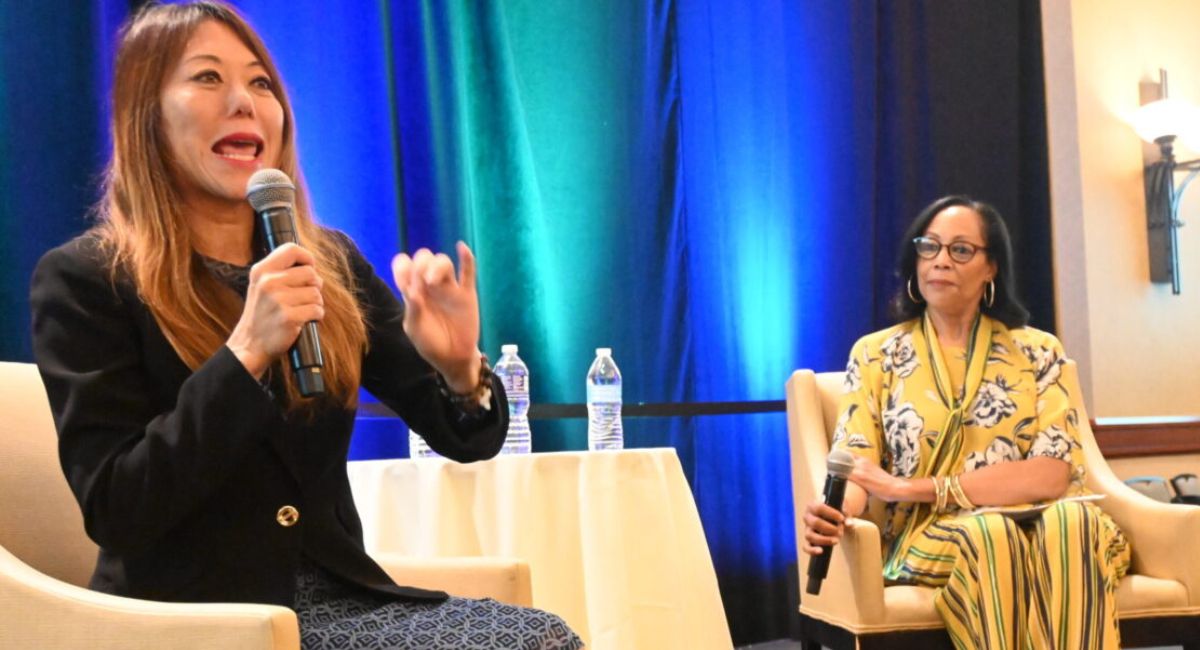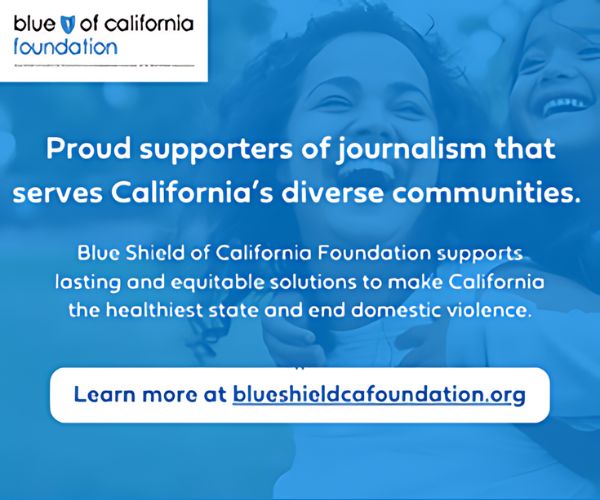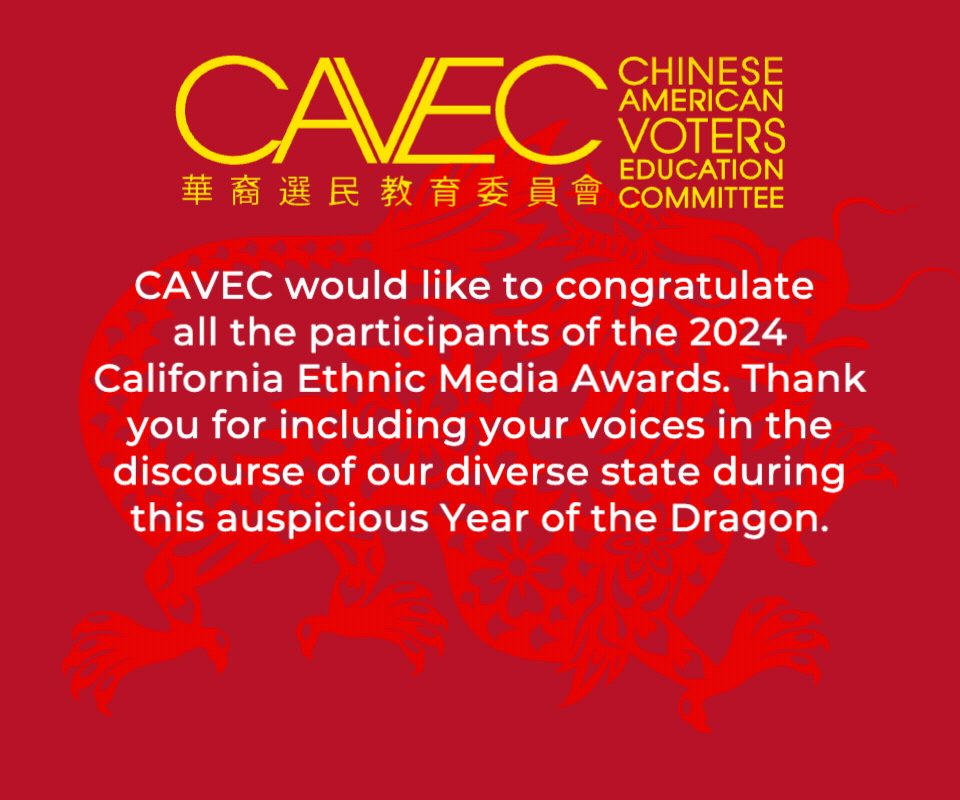SACRAMENTO, California — Several public and private initiatives are available in California to aid ethnic media and its employees, said speakers on Aug. 28, at the second day of the Ethnic Media Services/California Black Media Expo and Awards Fest.
The sector faces a reckoning moment as funding that sustained local media over the past three years appears to be in jeopardy. Critically, the Stop the Hate initiative, which provided grants to ethnic media outlets to report and investigate hate crimes and their root causes, will end this year. California is facing a $40 billion deficit, which may impact the amount of advertising revenue ethnic media receives from state agencies.
California State Treasurer Fiona Ma, the keynote speaker for the Expo’s second day, acknowledged the budget deficit in her remarks, but said a $36 billion “rainy day fund” is expected to fill in the gaps. The deficit comes after three years of a budget surplus.
State Retirement Program
Critically for small businesses, California has created the CalSavers program, which mandates that any employer with at least 1 employee must enroll in the program so that their employees can save for retirement. 90% of the state’s employers are small businesses: the program precludes them from having to offer a costly pension or retirement savings program. Independent contractors and gig workers can also avail of CalSavers, said Ma.
In an interview with EMS, Ma emphasized the importance of ethnic media in her ability to get out the word to state residents about the raft of financial resources available to them.
Supporting Small Businesses
Her remarks were echoed earlier in the day by representatives of three state agencies who discussed the importance of the ethnic press in achieving the goals of AB 2019, which requires state agencies to liaison with small businesses and help them apply for various grants and loans programs. Small business certification is the first step, and several experts were on hand to help mom and pop press entities fill out the four-page application.
Eric Johnson, information officer for the California Housing and Finance Agency, said his agency had placed ads in 42 ethnic media publications, to help the public learn about the California Dream For All program. In Round 2 of the initiative, which offers first-generation homebuyers up to 20% of their home purchase price in down payment assistance, $250 million was apportioned out to about 1,700 families.
“We found that print and radio are the most effective for outreach: billboards not so much,” said Johnson, whose department also participated in a recent news briefing hosted by EMS. 22% of the housing vouchers were given to AAPI residents. Black and Latino residents also received significant amounts of housing support.
Impact of EMS News Briefings
“This is just the right thing to do,” said Johnson. “Buying a home creates generational wealth that people can pass down. I have so many people come up to me saying ‘I bought my first home through your program.’”
“There has been a huge demographic shift in California. The minority are now the majority,” said Connie Nakano, assistant director of the Office of Communications at the California Department of Aging. “We rely on the ethnic media to help us reach communities that are hard to reach. You are the trusted messengers in our community.”
CalGrows
The CDA recently collaborated with EMS for a series of news briefings about the state’s CalGrows program, a unique initiative providing free training and paid incentives to those caring for an elderly loved one. More than 13,000 caregivers have taken part in the program.
Currently, the CDA is working with ethnic media to spread the message about Covid vaccinations for the state’s elderly residents, who have the highest rate of fatalities from the illness. New vaccines will be rolled out this fall.
“We are looking to build partnerships and collaborate on ideas, not just placing ads,” said Nakano.
Philanthropy
A breakfast panel included speakers from 6 philanthropic organizations, who discussed how media can avail of funding for specific projects. Many of the grants are available solely to non-profit entities. And while newsmaking organizations are increasingly going the route of reclassification as a 501 (c) 3 non-profit, the majority are still for-profit businesses.
Troy Masters, publisher of the LA Blade, one of the nation’s largest LGBTQ publications, challenged the speakers, noting that all publications are largely a not-for-profit endeavor, regardless of how they are classified. He received cheers from the audience.
Speakers included:
- Priscilla Enriquez, CEO of the James McClatchy Foundation
- David Littlefield, public affairs manager at the California Wellness Foundation
- Jenna Lane, communications officer at the Blue Shield Foundation of California, which focuses on health equity and domestic violence
- Michelle Levander, director of the USC Annenberg Center for Journalism, which runs several fellowships for reporters interested in covering health equity
- Christa Scharfenberg, project director for UC Berkeley’s journalism fellowships, which places early career reporters in partner newsrooms
Website Monetization
The Google News Initiative was featured in a panel that discussed how newsrooms can effectively monetize their websites.
Other panels that day focused on the growing number of illiterate children in California. EdVoice revealed that 8 out of 10 Black children, and 7 out of 10 Latino children cannot read by the time they are in 3rd grade. Another panel focused on climate change and the impact of “greening communities” through simple interventions such as replacing asphalt with trees. (stories to follow)








